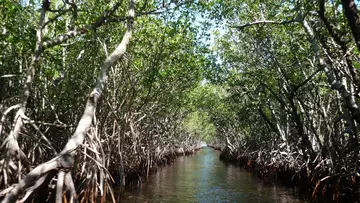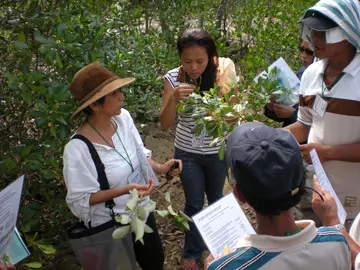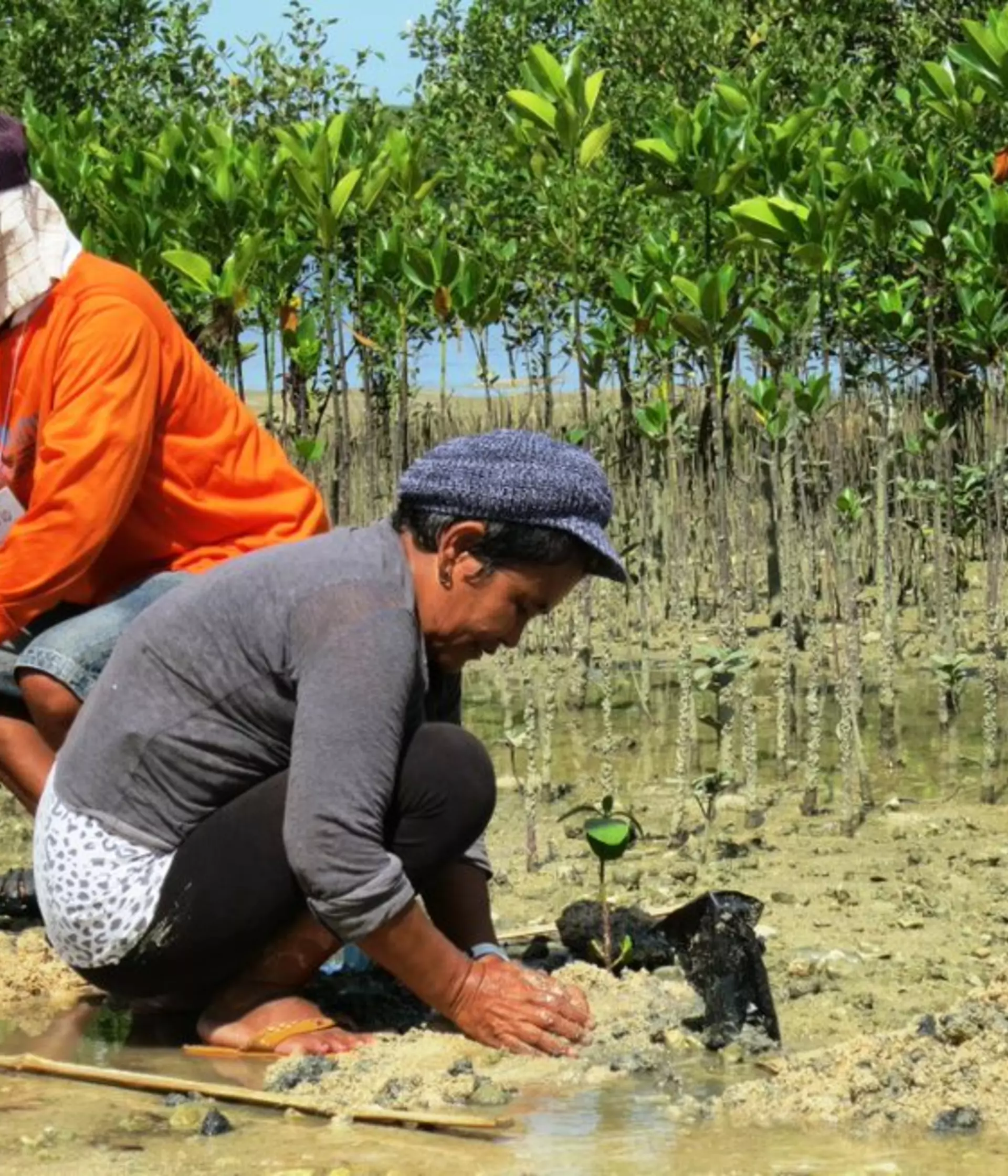
Mangrove trees are born survivors – and as coastal defences and carbon sinks, they’re invaluable in helping to mitigate global warming.
We have long worked in the Philippines to protect and restore Mangrove trees' extraordinary ecosystems. Mangroves are a remarkable group of trees that have adapted to live in the intertidal zones of tropical coastlines and estuaries. They have learned to thrive in conditions that would kill off most plants, including salty water, advancing and retreating tides, and low-oxygen soils. Many sit on exposed, stilt-like roots that anchor them against the tide and allow them to take oxygen directly from the air.
What are the features of a typical mangrove forest?
Most mangrove forests are a muddy, mosquito-heavy tangle of swampy vegetation and tree roots. They might not be everyone’s idea of a marine wildlife paradise – yet they offer shelter and sustenance to a huge range of species (including us). Their intricate root systems provide a safe haven and nursery for aquatic life, including many young fish and crustaceans that later move out to populate reefs and oceans.

Mangroves are also unsung heroes of the fight against climate change. They shield inland habitats and communities from tropical storms that are expected to increase in intensity as the planet warms. And it’s now known that coastal forests such as mangroves capture and store far more carbon for their size than terrestrial rainforests.
Globally, however, mangroves are in trouble. Between 20% to 35% of the world’s mangroves are thought to have disappeared since 1980, and one in six mangrove species is under threat. And living as they do between land and sea, mangroves are themselves potentially vulnerable to climate change impacts such as rising sea levels and temperatures. All this isn’t just bad news for biodiversity – it could have a serious impact on the planet’s capacity to store carbon, deepening the climate crisis.
Nature-based solutions
The island of Panay in the Philippines is the focus of ZSL’s mangrove conservation work. Like other mangrove strongholds worldwide, it has lost many of its coastal forests to development – chiefly, commercial fishponds. ZSL scientists embarked on a community-based mangrove rehabilitation project in 2007, empowering local people to restore disused fishponds to flourishing mangroves.
Since then, over 100ha (an area around the size of 140 football pitches!) of run-down fishponds have been regenerated. ZSL has trained over a thousand people in mangrove rehabilitation, and six marine protected areas in the region have been extended to include mangroves and seagrass meadows as well as coral reefs – giving these often-undervalued habitats the recognition they deserve.

People thrive when nature thrives
Mangrove restoration is not only good news for wildlife and carbon capture; it’s also a cost-effective, nature-based solution to strengthening coastal defences against devastating typhoons like Haiyan, in an island nation on the front line of climate change.
Meanwhile, ZSL continues to seek out opportunities to provide coastal communities with more sustainable livelihood choices through its projects, creating win-win-win situations for people, wildlife and the planet. These include opening mangrove eco-parks to boost ecotourism, and offering extra sources of income through its innovative fishing-net recycling and seaweed farming enterprises.
After all, if we are to truly solve the huge environmental challenges facing the world today, we’ll need to find sustainable ways to share the planet with our fellow species, and develop nature-based solutions that work not just for mangrove forests, or for climate action, or for coastal communities – but find the common ground. Above all, we need to recognise that in protecting mangroves, we protect countless other species too – including ourselves.
